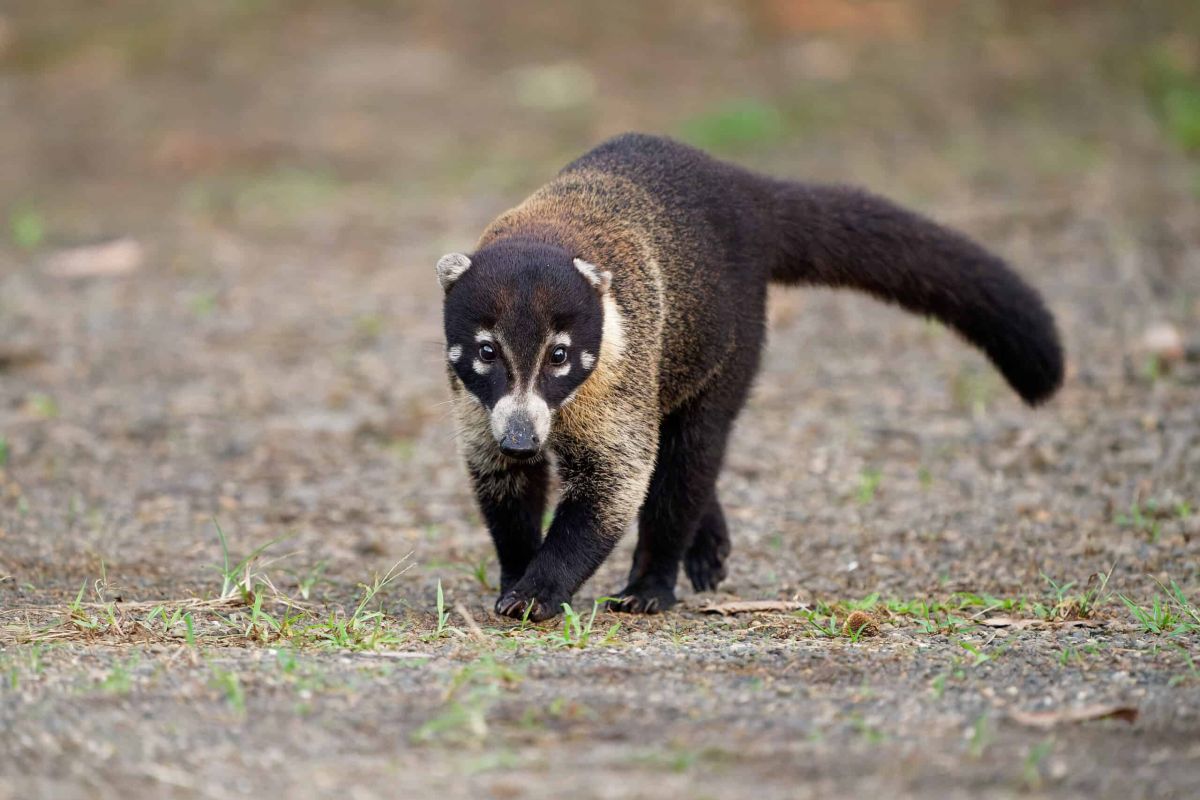Discovering White-Nosed Coatis

When most people think of exotic wildlife, they might picture elephants roaming the African savannah or colorful parrots flitting through the Amazon rainforest. However, there is a lesser-known yet equally enchanting creature that calls the jungles and forests of Central and South America home: the white-nosed coati. This playful and curious mammal has captured the attention of wildlife enthusiasts and researchers alike, and for good reason. Let’s take a closer look at the life and characteristics of these delightful animals.
What is a White-Nosed Coati?
The white-nosed coati, scientifically known as Nasua narica, is a member of the raccoon family (Procyonidae). These creatures are known for their distinctive physical appearance, which includes a long, slender body, a long flexible snout, and, as the name suggests, white fur around their noses. They have a bushy tail that often features dark bands, and their fur is typically brown to reddish-brown.
Coatis are highly social animals, often seen in groups called bands, which can range from a few individuals to over 30. These social structures help protect them from predators and provide opportunities for play and interaction, making them a cheerful sight in the wild.
Habitat and Range
White-nosed coatis are native to a wide range of habitats, including tropical rainforests, deciduous forests, and even mountainous regions. They are predominantly found in Central America, extending their range from southern Texas to northern Argentina and Uruguay. Coatis are also highly adaptable and can thrive in varying environments, from lush jungles to arid regions.
Movement and Behavior
One of the most intriguing aspects of white-nosed coatis is their behavior. Unlike many other mammals, coatis are semi-arboreal, meaning they spend a considerable amount of time both on the ground and in trees. Their long, flexible snouts are excellent tools for foraging as they root through leaf litter and tree bark in search of insects, fruits, and small vertebrates.
Coatis are diurnal, meaning they are active during the day and sleep at night, often finding shelter in trees or dense foliage. Their social nature is on full display during playtime, where young coatis engage in wrestling and chasing, showcasing their vibrant personalities.
Diet and Foraging Habits
White-nosed coatis are omnivorous, with a diverse diet that includes insects, fruits, small mammals, eggs, and even plants. Their foraging technique often involves digging, which can loosen the forest floor and disturb the soil, promoting the growth of new plants. This behavior underscores their role in maintaining the ecosystem’s health, making coatis a vital part of their habitat.
Reproduction and Lifespan
The mating season for white-nosed coatis typically occurs during the warmer months, and females are known to give birth to a litter of two to seven young after a gestation period of around 77 days. Female coatis are primarily responsible for raising the young, while males live separately, joining the group primarily for mating purposes.
Young coatis are born with their eyes closed and rely heavily on their mothers for food and protection. As they grow, they learn essential survival skills by observing and interacting with their family group. In the wild, coatis can live for up to 7-8 years, while those in captivity may reach 10-12 years, owing to better diet and fewer threats.
Conservation Status and Threats
Despite their charm, white-nosed coatis face several threats, primarily due to habitat loss from deforestation, agricultural expansion, and urban development. Poaching and traffic-related incidents also pose significant risks, leading to a decline in their populations in some areas. Conservation efforts are crucial to ensure the sustainability of coati populations, which includes protecting their natural habitats and enforcing anti-poaching laws.
Conclusion The white-nosed coati is a unique and vital part of Central and South America’s ecological tapestry. Their playful nature, social structures, and foraging habits not only amaze nature lovers but also contribute to the health and diversity of their ecosystems. As we continue to learn more about these captivating creatures, it becomes increasingly important to advocate for their conservation. With awareness and action, we can help ensure that future generations get to experience the joy of encountering these delightful animals in their natural habitats.



